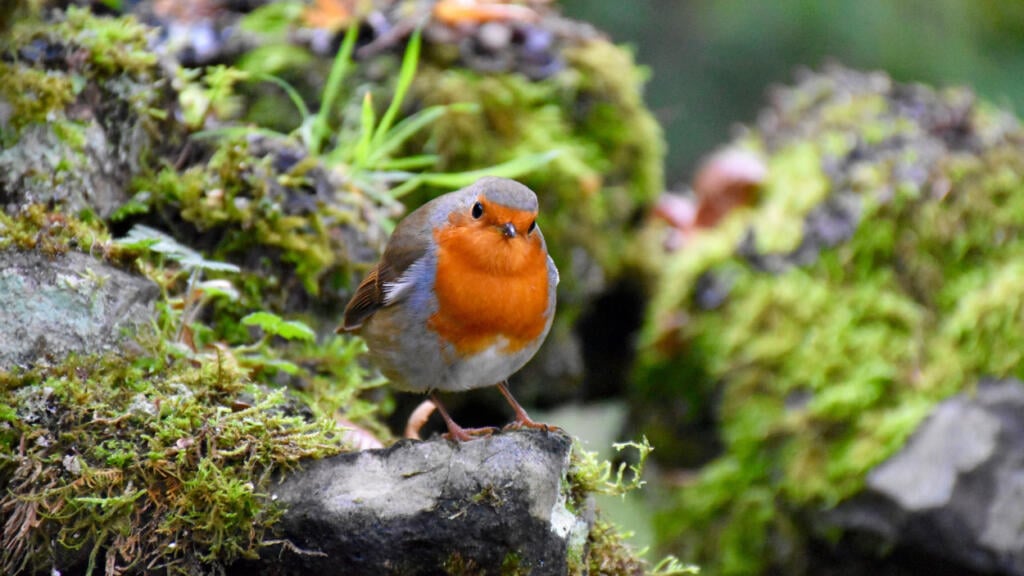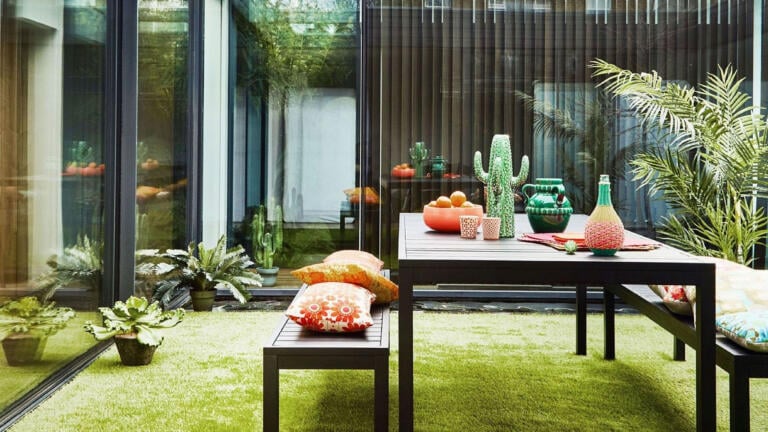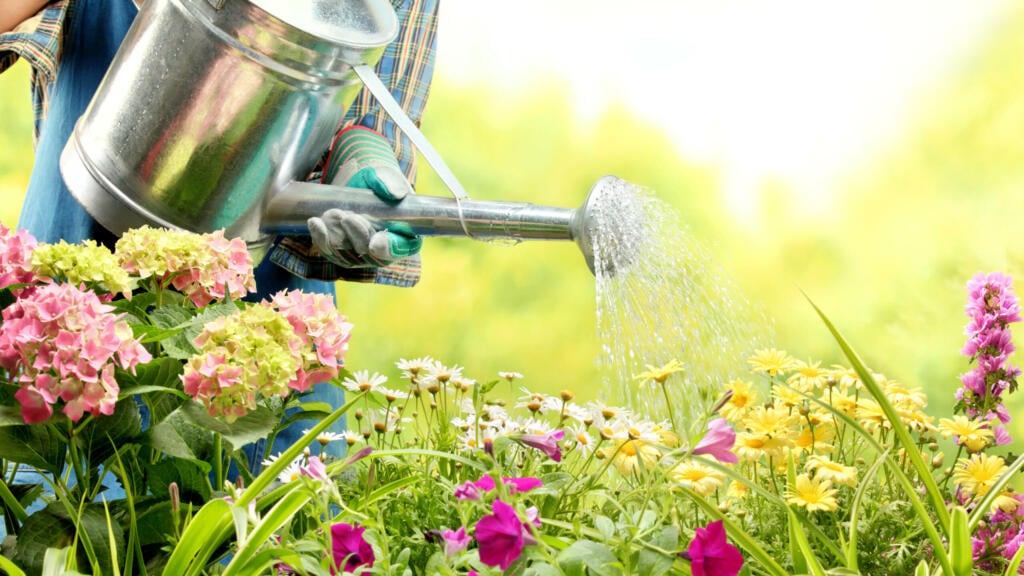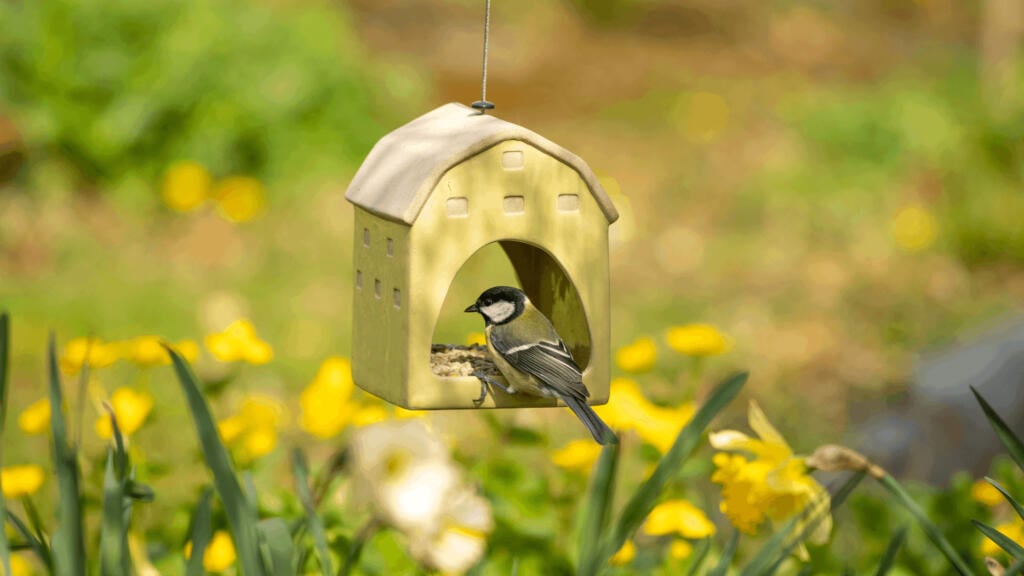
Best plants for a raised bed: 14 top flowers and shrubs to pick
Rosanna Spence
Try these clever ways with rocks, pebbles and boulders to transform your terrain.
Have you always wanted to create a rock garden, but been frustrated by the size of your outside space? Well, you don’t have to recreate Cheddar Gorge or the Giant’s Causeway to achieve beautiful results.
Our small garden rockery ideas will show you how anything from an unused pot to an existing stone wall can become the perfect home for alpine plants.
Have you always wanted to create a rock garden, but been frustrated by the size of your outside space? Well, you don’t have to recreate Cheddar Gorge or the Giant’s Causeway to achieve beautiful results.
Our small garden rockery ideas will show you how anything from an unused pot to an existing stone wall can become the perfect home for alpine plants.
 Credit: National Trust Images / Tamsin Holmes
Credit: National Trust Images / Tamsin HolmesA rockery can inject interesting texture and planting variety into an otherwise plain lawn. Or if you’re sick of mowing and taking care of high-maintenance flowers, rather than opting for artificial grass, installing a rockery can provide respite, with drought-resistant plants that offer year-round interest.
 Credit: Vidal Balielo Jr.
Credit: Vidal Balielo Jr.This small garden rockery idea transforms the macro to micro. In fact, you don’t even need a garden at all to achieve this design.
Take a small pot or other container and fill it with tiny succulents and cacti, held in place with sandy soil. Line the container with delicate pieces of slate, or another stone you can source locally, to frame the cutest rockery you’ll ever see.
Creating one of these can be done in an hour and would make a great weekend activity with your children or grandchildren. (Though be wary of any spikes!)
Once finished, this display could sit on an outside table to complete your garden seating area, or add interest to a windowsill or balcony.
 Credit: National Trust Images / Annapurna Mellor
Credit: National Trust Images / Annapurna MellorPerhaps you’re looking to give your front garden, driveway, or existing gravelled area a little lift? Gravel is an excellent base for your next small garden rockery idea, as shown here at Felbrigg Hall, Gardens and Estate.
This is because it creates ideal growing conditions for many rockery-friendly plants.
“You can plant many rockery plants directly into a three-inch (7.5cm) layer of gravel, rather than trying to modify existing soil,” says garden designer Joe Perkins.
Suitable plants and flowers, such as lavender and osteospermum (pictured), can be plugged into the gravel, then smaller rocks and stones added to build up a rockery in one area or scattered around.
 Credit: Shutterstock / libor.pal
Credit: Shutterstock / libor.palDo you have a walled courtyard garden, or an existing stone wall that’s waiting to be transformed into a small garden rockery?
Most stone structures tend to have ready-made little planting pockets (you might already have green foliage sprouting out of them). You could give these surfaces a makeover by adding succulents, alpines and other shallow-rooted plants. There just needs to be enough soil or gravel for these plant roots to grip into and survive.
Choosing the right stone for your small garden rockery idea
“Creating a rock garden is really simple. Creating a rock garden that looks realistic is incredibly difficult,” says garden designer Robert Hughes. He adds: “The best place to source boulders is at your local quarry. The boulders will come in all shapes and sizes and be most likely free of algae.”
This is important if you want to avoid your rockery becoming too slippery in the rain, especially if some of the stones will be underfoot or part of a stairway.
“Avoid rounded beach or river boulders as they tend to look out of place away from their natural environment and can make a garden look outdated,” Hughes adds.
 Credit: Shutterstock / Roberto Cerruti
Credit: Shutterstock / Roberto CerrutiIf you’re fond of appreciating cultural traditions and honouring their practices, then perhaps a Japanese-inspired zen garden is for you.
Based heavily on dry materials like sand and stone, these spaces can instantly transport you into a more mindful state. And provided you don’t have a high local cat population, you might be able to enjoy raking some sand without fear of it being used as a feline latrine.
Often these gardens contrast the sand and stone with a relaxing body of water. This small garden rockery idea includes a shallow pond lined with stones, with minimal aquatic vegetation.
 Credit: Shutterstock / eurobanks
Credit: Shutterstock / eurobanksIntroducing a pond to your garden is a wonderful way to encourage more wildlife to call it home. Lining your pond with stones and rocks, no matter how small, is a great way to make the project look finished. It also creates more areas for plants to flourish around the body of water. It’s a ready-made rockery waiting to grow.
It’s a good idea to pile up some extra rocks that lead down into the base of the pond at one point, so that animals can easily enter and leave the water as needed. It’ll help any creatures who may not be so happy with a dip to escape the water too.
 Credit: Shutterstock / Marina Lohrbach
Credit: Shutterstock / Marina LohrbachAnother small garden rockery idea is to create a cosy nook for a bistro set. This rockery provides privacy, creating a whole new area in a snug space, while also doubling up as a raised bed planter.
Planting at eye level means you can relax with a cup of coffee and admire the colours and scents of the rockery’s plants more easily.
“It’s important to provide good drainage for a rockery’s plants,” warns garden designer Joe Perkins. “The majority will enjoy dry conditions and won’t like having ‘wet feet’ in the winter.”
 Credit: National Trust / Simon Harris
Credit: National Trust / Simon HarrisInclude found objects that might have personal meaning in your small rockery garden idea. Set them within the main rocks and plants. They can be placed down if you want to take them with you or give them away at some point, or they can be mortared in.
These objects could be special stones or shells collected on a holiday, or, like this example above, from Woolbeding Gardens in Sussex, embed a collection of ammonites. Doing this turns your rockery into a celebration of memories in a natural display.
 Credit: Shutterstock / Virrage Images
Credit: Shutterstock / Virrage ImagesThere might already be existing stone or concrete structures in your garden, such as steps. The materials of a small garden rockery can create a cohesive border either side of paving slabs, for example.
The materials can complement each other and create a blend, from engineered stone to softer planting schemes, in the rest of the garden. This design uses a darker stone in its rockery to contrast with the paler paving slabs, and the injection of bright green plants ties in this area to the garden’s lawn.
 Credit: National Trust Images / Marianne Majerus
Credit: National Trust Images / Marianne MajerusContrast lower lying plants and hard rock surfaces with some tall, fluffy ornamental grasses, like this example from Nymans. Garden designer Joe Perkins tells us it’s important not to forget to add them.
They can make a big impact visually, no matter how small a rockery is, as much of their volume reaches up, rather than taking up valuable planting space.
Grasses will add some movement to your rockery as they sway in the breeze, making a nice gentle rustling sound as they do. Jackson Nurseries recommends Carex elata ‘Aurea’ for tufts or arching, narrow-bladed, bright yellow leaves with fine green variegation. Alternatively, the company says Imperata cylindrica ‘Red Baron’ is an “excellent, upright, ornamental deciduous grass with rich red, sharply pointed blades fading to bright green at the base”.
 Credit: National Trust Images / Tamsin Holmes
Credit: National Trust Images / Tamsin HolmesIf you want to create your own magical world at home, a good small garden rockery idea is to encourage moss and lichen to grow on the stones you use, like this example from Stourhead.
You could of course use rocks that already bear the soft green growth, but shady, damp conditions will also help. This material does more than just look good, though. Lichen topped a RHS list of its most beneficial garden wildlife.
“Lichens provide food for other garden wildlife and create new habitats by providing shelter for invertebrates and nesting materials for birds and mammals,” says the RHS. “Lichens are often associated with good air quality as they carry out photosynthesis to capture atmospheric carbon, and certain lichens also absorb atmospheric nitrogen, a common pollutant. They regulate water and humidity levels by soaking up moisture during wet weather and slowly releasing it as water vapour afterwards.”
Lichen is very slow growing. There are some claims that seaweed fertiliser, beer, yogurt and buttermilk can encourage lichen to grow on bare rocks, but we’ll let you experiment with that yourself.
What should you plant in a rockery?
No small garden rockery idea would be complete without the right plants to finish the look. But what plants will really thrive in this dry, shallow-soil environment?
Succulents are always a popular option, as well as sedum (which is now often referred to as hylotelephium). Dwarf varieties of conifer and flowers like daffodils and crocuses will also provide year-round colour to break up the stone textures.
“Larger shrubs could include Pistacia lentiscus (known as the mastic tree, from the Mediterranean),” says Perkins.
He also recommends Pittosporum tobira, Euphorbia x pasteurii ‘John Phillips’ and, if you’re in a sheltered spot, try some of the echium species (for example, the biennial Echium pininana).
“Smaller perennials and subshrubs you could plant include Ligusticum scoticum, Crambe maritima, iris species, Centranthus ruber var. coccineus (a lovely version of the familiar red valerian), Ballota pseudodictamnus for its grey, felty leaves, and the easy-going Sedum palmeri.”
 Credit: Joe Perkins Design, The Facebook Garden: Beyond the Screen, Gold medal Chelsea Flower Show 2019 (Photo: Natalia Odescalchi)
Credit: Joe Perkins Design, The Facebook Garden: Beyond the Screen, Gold medal Chelsea Flower Show 2019 (Photo: Natalia Odescalchi)It’s hard not to feel soothed by spending time by a coastline, even a stony one. One small garden rockery idea is to follow in the footsteps of garden designer Joe Perkins, and draw inspiration from the texture of rocky coastal cliffs. (In this case, from formations found along the Basque coastline in northern Spain.)
Don’t be put off by this rockery’s grandeur. Perkins tells us it’s really “quite simple” to reproduce this sort of idea in your own back garden.
“Use a mix of gravel or stone chippings with larger bands of stone set into the ground, perhaps with a few larger pieces to form the occasional outcrop,” he explains. “It’s important for the stone and chippings to be of the same type and/or colour tone.”
 Credit: Robert Hughes Studio
Credit: Robert Hughes StudioHot tubs are a real treat in the garden. But they don’t always look aesthetically pleasing and can dominate your eyeline in a smaller outside space. So why not hide it from view and surround it with a natural rockery on the side facing the house?
That’s exactly what this rockery, designed by Robert Hughes, does. If you look carefully, you can see the top of a hot tub peeking out to the left-hand side. But this approach could also work if you want to hide a water butt, or perhaps some unsightly storage.
Even if you have a small garden, don’t be afraid to be brave with the size of stones in your rockery.
“A variety of rock sizes works well to create a natural feeling landscape,” says Hughes. “If the boulders are all small and manageable, you will lose the authenticity if trying to replicate nature.”
 Credit: RHS
Credit: RHSThis small garden rockery idea takes its inspiration from an old, much-loved rock garden at RHS Wisley. If your outside space is tiered, or has a steep slope, this example shows how successful a rockery can be in transforming a usually awkward planting space.
According to the RHS, this particular steep slope faces north and suits many plants that prefer a cool, shady spot. Plants that enjoy more sun have been placed in the more exposed outcrops. There’s even a cascading waterfall. This could be replicated on a small scale in your own home to bring a relaxing element into any steep gradients.
If you’re building your sloped rockery around a mains-powered waterfall, a water feature that lends itself well to a natural slope, the experts at Checkatrade have created a step-by-step guide. It covers all the stages from gathering rocks, to lining the water feature and filling in the cracks and crevasses.
As well as positioning the waterfall near a power source, Checkatrade reminds gardeners it’s important to not forget that waterfalls will need an upper pool and lower basin, plus the waterfall itself and, if necessary, a stream.
 Credit: National Trust Images / Paul Harris
Credit: National Trust Images / Paul HarrisThis example from The Weir Garden is another useful small garden rockery idea, if your outside space is tiered or sloped. Incorporating a natural-looking stairway into your rockery, created from slate or large stones, will mean you can have better access to more parts of the planting scheme. And it only needs to be comprised of a few steps.
Making the steps part of the design will create a more ethereal, natural effect. You may prefer this over the straight lines of paving slabs or decking. You can also use the steps as a seat, so you can sit amid your rockery design and enjoy it safely.
If you need a hand
Moving rocks around is no easy feat. This is especially the case if you’re choosing particularly large stones or have a main feature stone providing a focal point.
Hughes says in this case, employing the right people is key. “You’ll need machinery to move and install the rocks and someone with an eye for piecing it together, which in itself can be an art form,” he advises.

Written by Rosanna Spence she/her
Published: Updated:
Rosanna Spence has been a journalist for nearly 10 years, reporting on a huge array of topics – from microwaves to cocktails, sustainable buildings, the Caribbean islands and beyond. She’s interviewed chefs at the helm of Michelin-starred restaurants and chatted to countless CEOs about their businesses, as well as created travel guides for experienced travellers seeking life-changing adventures. Throughout her career, she has created content for Business Traveller, i-escape.com, Pub & Bar, BRITA, Dine Out and many more leading titles and brands.

Rosanna Spence

Rosanna Spence

Camilla Sharman

Rosanna Spence